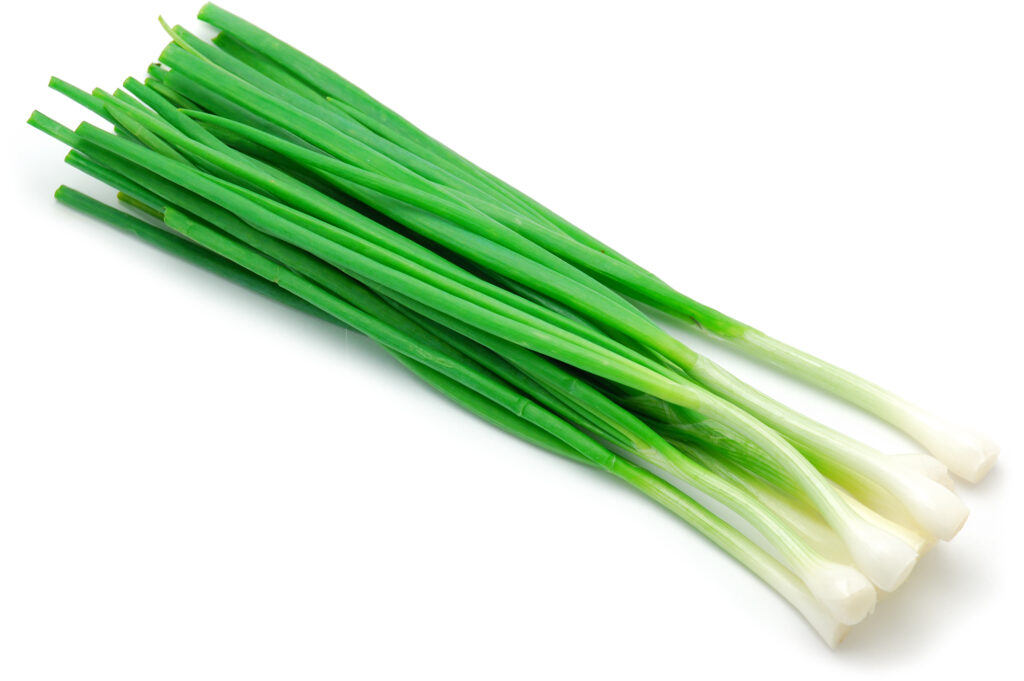
As a new parent, you have seen your babies go through the teething phase. Teething, also known as odontiasis, occurs around the 4th to 12th month mark when a baby’s teeth begins to erupt through their gum-line. It is an incredibly discomforting experience for babies, and many display symptoms from drooling and whining to a fever and coughing.
If you’re a new parent, you’re likely looking for ways to make your child’s teething experience more comfortable. You may have tried countless teething toys and home remedies to alleviate the pain your babies are going through.
While there are a variety of over-the-counter products available to help ease the pain and discomfort associated with teething, some parents are turning to natural remedies. In fact, you have probably heard of the age old remedy of giving your baby a green onion to gnaw on.
But how and why do green onions work for teething babies? In this article, we’ll take a closer look at the science behind using green onions for teething and the potential risks and benefits of this natural remedy.
Why Do Green Onions Work?
While there are no scientific proof to back the claims, the humble vegetable has been proven by countless reviews on parent blogs and forums to be a natural remedy for soothing the discomfort associated with teething.
The primary reason for its seemingly magical solution to a baby’s teething pain may be due to the presence of quercetin, a powerful antioxidant that has anti-inflammatory and anti-histamine properties.
You may be interested in: Why Does My Baby Teeth Look Discolored Or Gray?
When a baby is teething, the gums become swollen and inflamed as the new tooth pushes through the gums. The pressure and discomfort caused by this process can lead to irritability and discomfort in the baby. Quercetin offers an analgesic effect while relieving any discomfort or inflammation caused by teething.
Additionally, the coldness of the green onion (after refrigeration) helps to soothe the pain and relieve the swelling in the gums of your baby.
Green onions also contains numerous nutrients that keeps your baby healthy and strong. For instance, each stalk of green onion contains 0.4 grams of fiber, or 12% of a baby’s daily needs. It is also rich in vitamin A, vitamin C, vitamin K, and folate (folic acid).
How to Prepare Green Onions for Your Baby?

Here are the steps you should take to prepare a green onion for your teething baby.
- Select the right green onion. Choose green onions that are dry and has a slight crunch. Those with a soft and mushy bulb is likely rotting from the inside and should be avoided.
- Clean up the green onion. This involves the removal of the roots and any parts of the green onion that has gone slimy or filmsy. Scrub the stalk with a soft bristle toothbrush to remove any traces of dirts that remains at the bulb. This is especially important as it is likely that a baby will bite along the entire stalk.
- Stick the green onion into the freezer for 20 to 30 minutes to give it a quick chill. The coldness of the green onion reduces the grassy flavor and helps to soothe the swelling gum of teething babies. Avoid freezing the green onion as it will be too cold for the baby to chew on. Furthermore, thawing a frozen green onion will cause it to go limp and lose its crunchiness.
- Have your baby chew on it! Encourage him or her to chew on the white end as that is where all the nutritions are. Be sure to monitor them to prevent them from biting off a large piece of it!
While there are generally no issues with giving your baby green onions, it is always a good idea to check with your pediatrician before introducing any new foods to your baby, including green onions. Also, keep an eye on your baby’s reaction to the new food and make sure they do not have an allergic reaction.
Will Other Fruits and Vegetables Work?
Many other varieties of onions such as red onions and ramps also contain high levels of quercetin. However, the strong and pungent taste associated with these variants make them unsuitable for babies who are still developing their tastebuds.
Some babies respond well to crunchy foods like carrots, celery, cucumbers, and cauliflower. Frozen fruits such as bananas, apples and strawberry are also suitable for teething babies. However, these food should be given in a mesh or silicone feeder to prevent them from swallowing a large chunk of it.
While these fruits and vegetables may not contain the quercetin that can help to reduce inflammation, these vegetables are packed with nutrients that are essential for growing babies. That said, you will just have to experiment a little to see what your baby likes best.
It is also worth noting that there are other safe and effective ways to relieve teething symptoms in babies such as using a teething ring or a cold washcloth. In addition, if your baby is experiencing severe pain or discomfort while teething, it’s important to consult your pediatrician.





